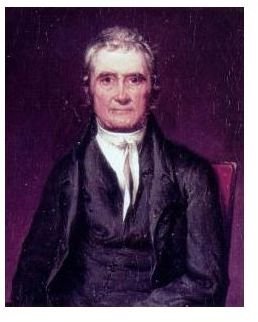What Are the Powers of the Judicial Branch of Government? Article 3 of the U.S. Constitution Explained
Summary of Article 3
Before answering “what are the powers of the judicial branch of government?”, a summary of article 3 of the Constitution is necessary.
Section 1: The judicial power of the federal government is “vested in one supreme court, and in such inferior courts as the congress may from time to time ordain and establish.” Section 1 of article 3 establishes that judges shall hold their office as long as they demonstrate good behavior. It does not, however, specify what good behavior is. Federal judges shall be compensated for their services and their compensation shall not be lowered during their term of service.
Section 2: The first paragraph of article 3, section 1 was modified by the 11th amendment and is no longer valid. The Supreme Court holds original jurisdiction in cases affecting ambassadors, public officials, and individual states. In all other cases, the Supreme Court has appelate jurisdiction, which means they only hear cases that have been decided at a lower level and have been appealed. All crimes shall be tried by a jury and shall be held in the state where the crime was alleged.
Section 3: Section 3 of article 3 sets forth the penalty for treason: “Treason against the United States, shall consist only in levying war against them, or in adhering to their enemies, giving them aid and comfort. No person shall be convicted of treason unless on the testimony of two witnesses to the same overt act, or on confession in open court.” Section 3 also gives Congress power to enact laws for the punishment of treason and limits the punishment to include only the responsible individual.
What are the Powers of the Judicial Branch?
The establishment of the Supreme Court by article 3 of the Constitution contains very few details and has, therefore, evolved into something the Founding Fathers may not have intended. The Constitutional powers of the judicial branch consists of trying those accused of federal crimes.
Checks and Balances
What are limits on the Judicial Branch?
- The Senate approves federal judges.
- The House of Representatives can impeach federal judges and the Senate tries them.
- Congress has the power to initiate Constitutional amendments, establish inferior federal courts, and set the jurisdiction of courts.
- The executive branch appoints federal judges.
What are the powers of the Judicial Branch of government? As part of the system of checks and balances, judges cannot have their salaries diminished by Congress and they cannot be removed from office for reasons other than poor behavior. The most important power of the judicial branch of government is judicial review, the ability to declare laws unconstitutional. This power, however, is not granted in the Constitution. The practice began more than a decade after the Constitution was ratified. In 1803 in Marbury v. Madison, Chief Justice John Marshall gave the Supreme Court the authority to declare laws unconstitutional.
Students of government have argued ever since whether or not judicial review unfairly slants the balance of power to the judicial branch and whether or not the Founding Fathers intended for the Supreme Court to have such power. James Madison records that only 11 of the 55 Constitutional delegates expressed an opinion on judicial review (9 of the 11 favoring it). At the time of the Constitutional convention over half of the state constitutions in existence allowed for some form of judicial review. The fact remains, however, that judicial review is not addressed in the Constitution although it does remain an important power of the judicial branch of government.
This post is part of the series: The United States Constitution Study Guide
The first step in holding elected officials accountable to the Constitution–we must learn what’s in it.
- Summary of the United States Constitution: Article I - The Legislative Branch
- Explanation of the United States Constitution: Article II, The Executive Branch
- Summary of Article 3 of the United States Constitution: The Judicial Branch
- Summary and Analysis of the United States Constitution: Articles IV-VII of the United States Constitution
- Summary of the 27 Amendments to the United States Constitution
